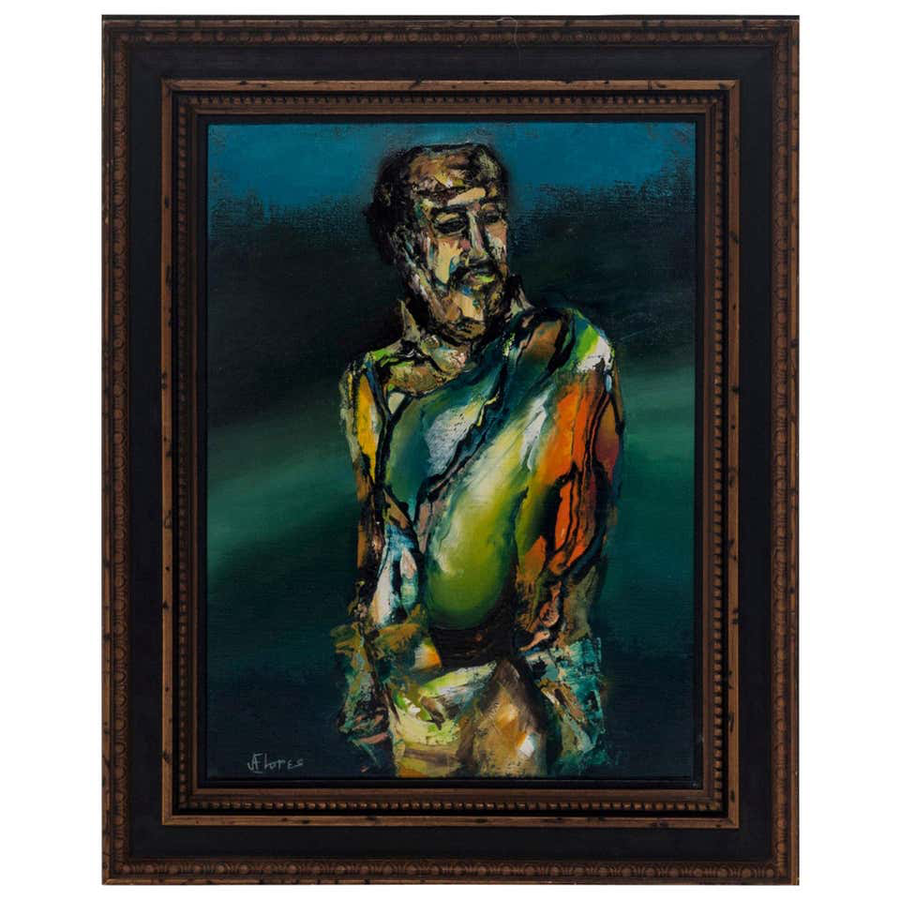The Duty of Feeling and Expression in Figurative Oil Painting: An Extensive Analysis of Subject and Structure
The interplay of feeling and expression in metaphorical oil painting offers as an essential lens with which one can examine the elaborate partnership between subject matter and structure. Artists harness numerous methods, from color choice to brushstroke characteristics, to grow emotional vibration within their works.
Recognizing Feeling in Art
Emotion in art acts as a powerful avenue for expression, allowing musicians to communicate complicated sensations through their work. In figurative oil paint, this psychological depth is usually represented through the depiction of the human figure, capturing the subtleties of human experience. The choice of subject, shade scheme, and brushwork all add to the psychological resonance of a piece.
Artists often bring into play personal experiences, societal problems, or global motifs to stimulate feelings in the customer. As an example, a picture may reflect vulnerability, while a dynamic number in activity can symbolize flexibility or chaos. These emotional threads connect the viewer to the artwork, promoting a dialogue that goes beyond the aesthetic tool.
Furthermore, the interplay between light and shadow can intensify psychological strength, assisting the customer's gaze and attracting interest to specific elements within the composition. The use of structure in oil painting even more adds layers of complexity, inviting a tactile response that enhances the psychological experience. Overall, comprehending emotion in art is important for appreciating the subtleties that characterize figurative oil painting, as it changes mere representation right into an extensive expedition of the human condition.
Crucial Element of Composition
In the world of metaphorical oil painting, the structure serves as the underlying framework that organizes aesthetic components and boosts the psychological narrative. Important components of composition consist of balance, contrast, focal factor, and rhythm, each adding to the overall influence of the artwork.
Balance describes the distribution of visual weight within the paint, which can be accomplished through in proportion or unbalanced setups. A healthy composition provides security, allowing the customer to engage with the item harmoniously - figurative oil painting. Contrast, on the various other hand, includes juxtaposing different components, such as light and dark or cozy and great colors, to lead the audience's eye and stimulate emotional actions
The focal point is vital, as it guides focus to the most substantial part of the painting, commonly highlighting the emotional core of the narrative. By skillfully integrating these essential components, artists can craft compelling and emotionally powerful metaphorical oil paints that astound and involve their audience.
Topic and Its Impact
Subject plays an essential role in figurative oil paint, as it not just offers as the foundation for the narrative however likewise shapes the audience's analysis and psychological interaction with the art work. The option of subject issue-- be it a singular number, a team dynamic, or a thematic representation-- straight influences the emotional environment communicated to the audience.

For example, pictures commonly evoke personal links, revealing the details of human expression and character, while scenes portraying public activities can create a sense of belonging or fond memories. Furthermore, the cultural and historic context of the subject issue enhances the visitor's understanding, triggering much deeper representations on societal standards, values, and the human condition.
Various topics likewise create varying degrees of engagement; a remarkable problem portrayed via numbers in stress might generate sensations of stress and anxiety or compassion, while serene landscapes can invoke peace and contemplation. Inevitably, the impact of subject in metaphorical oil painting is profound, as it serves as an avenue for psychological vibration, assisting the viewer's feedback and interpretation, and cultivating a link in between the artwork and the viewer. This interplay is crucial for the effective communication of the artist's intent.
Strategies for Stimulating Sensations
The efficiency of figurative oil paint in sharing emotions is significantly influenced by the strategies used by the artist. Among the most essential methods is using color theory, where the calculated option of colors can stimulate certain psychological actions. Warm shades, such as oranges and reds, typically elicit sensations of passion or hostility, while cooler tones like blues and greens often tend to stimulate calmness or sadness.
Another vital method is the adjustment of light and darkness, referred to as chiaroscuro. This technique improves the three-dimensionality of numbers, creating significant contrasts that can heighten emotional depth. The positioning of light can lead viewers' emotions, highlighting particular aspects of the composition.
Brushwork likewise plays a vital role; loose, expressive strokes can communicate energy and spontaneity, whereas smoother strategies may recommend serenity or accuracy. Moreover, the setup of subjects within the composition can influence emotional impact. Close distance can recommend intimacy, while range may show isolation.
Eventually, the combination of these techniques allows artists to craft stories that resonate with the viewer, transforming a simple aesthetic experience right into an expressive psychological journey. - figurative oil painting

Instance Researches of Remarkable Works
Checking out notable jobs of metaphorical oil painting exposes how numerous strategies are used to evoke powerful feelings. One exemplary case is Edvard Munch's "The Scream," where the altered figure and swirling background communicate existential dread. Munch's use of color-- brilliant oranges and deep blues-- escalates the psychological impact, showcasing how palette selections can form customer experience.
Another considerable work is Pablo Picasso's "Les Demoiselles d'Avignon." Below, fragmented types and vibrant brushstrokes show a tumultuous emotional landscape, challenging conventional representations of the women figure. Picasso's ingenious structure not only catches the customer's attention but likewise welcomes reflection on motifs of identity and sexuality.
Furthermore, Frida Kahlo's "The 2 Fridas" provides a touching exploration of duality and self-identity. The contrasting numbers, linked image source by a common heart, exhibit Kahlo's psychological depth and personal story. figurative oil painting. Her precise interest to detail and symbolic components offer to involve visitors on a natural level
These instance researches highlight the profound link in between feeling and structure in metaphorical oil painting, revealing how musicians harness strategy to communicate complicated feelings and stories that reverberate across time and culture.

Conclusion
In conclusion, the interaction of feeling and expression in metaphorical oil paint significantly enhances the visitor's experience and interpretation of the art work. Via a mindful selection of subject issue and compositional techniques, musicians share extensive stories that resonate on both universal and individual degrees. The application of shade chiaroscuro, concept, and brushwork additional intensifies psychological deepness, transforming each canvas right into an effective representation of the complexities of the human experience.
In figurative oil paint, this psychological depth is typically portrayed with the representation of the human figure, capturing the subtleties of human experience.Additionally, the interplay between light and shadow can amplify psychological intensity, assisting the viewer's gaze and attracting attention to specific aspects within the structure. The use of structure in oil painting additionally adds layers of intricacy, welcoming a responsive action that improves the psychological experience.The focal factor is important, as it guides focus to the most significant part of the painting, see this commonly highlighting the emotional core of the narrative. Ultimately, the influence of subject issue in metaphorical oil paint is article extensive, as it offers as an avenue for psychological resonance, leading the visitor's response and analysis, and cultivating a connection between the onlooker and the art work.
Comments on “The Influence of Figurative Oil Painting on Modern Art and Society”